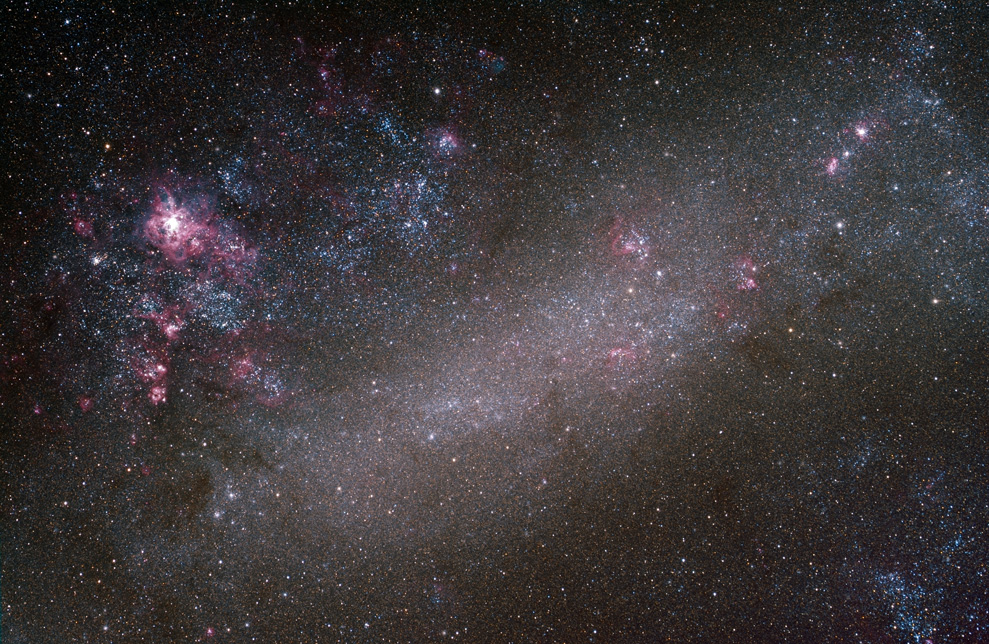

Large Magellanic Cloud with Tarantula Nebula: The Large Magellanic Cloud (LMC) is an irregular dwarf galaxy, orbiting our Milky Way. At 160,000 light years from us, it is thought (at the time this is being written) to be the third closest galaxy to us (for perspective, our galaxy is about 100,000 light years across). It is about 17,000 light years across. It contains approximately 1/10 the mass of the Milky Way. The large reddish knot toward the upper left of the picture is the Tarantula Nebula, an immense (1,000 light years across) star-forming region in the Large Magellanic Cloud. The LMC is classified as an irregular galaxy, but it is known to have a well-defined bar at its center (similar to the Milky Way), leading scientists to theorize that the LMC was a spiral galaxy distorted by the gravitational forces of the Milky Way.
Copyright 2007 Mark de Regt